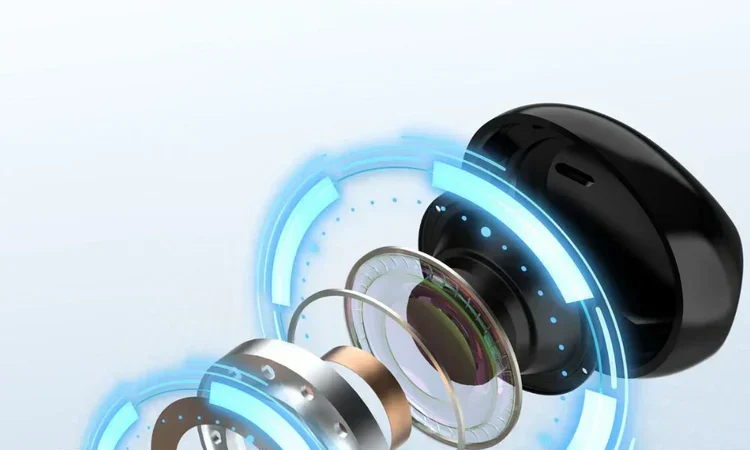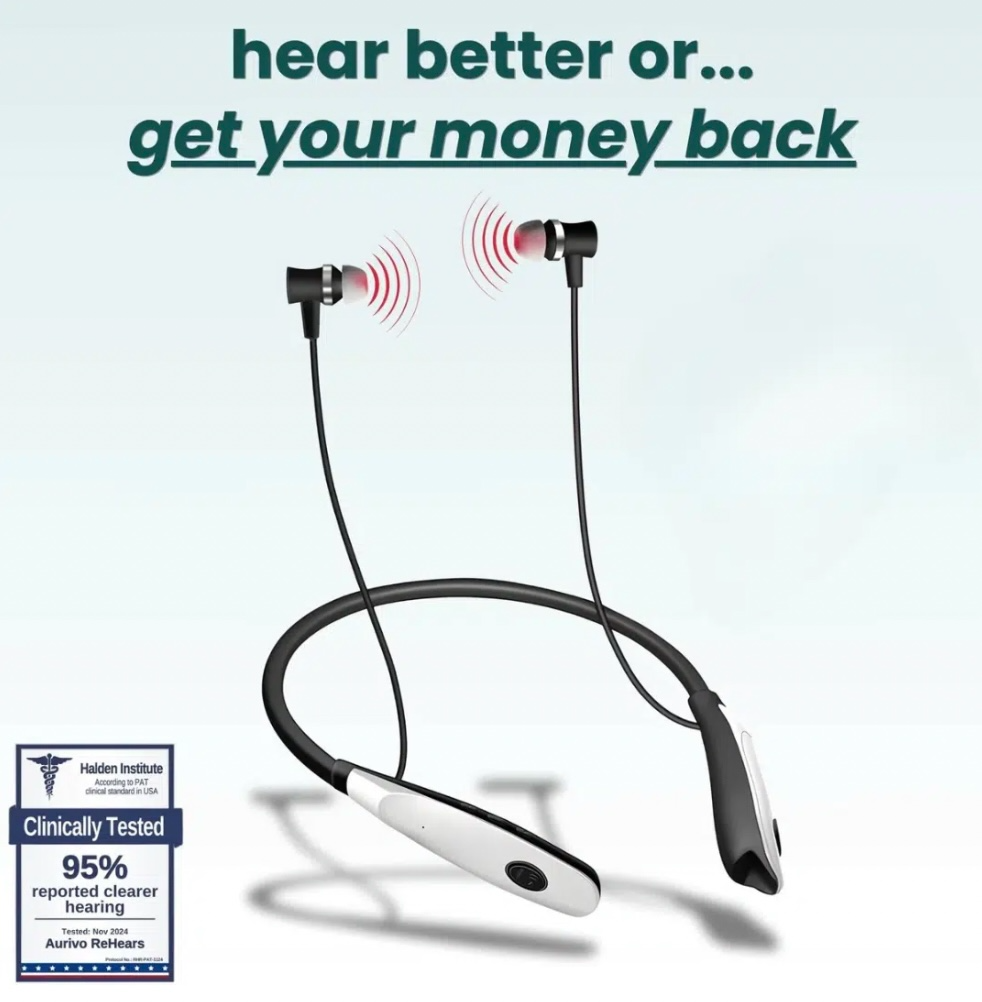
Here’s a straight-shooting, veteran’s take on a device that’s been making waves in the hearing space: ReHears delivers a practical, noninvasive path to clearer conversations and calmer days, without the constant hassle of fiddly settings or a clinic visit for every tweak, and that alone is worth attention from anyone who’s tired of missing key words at the dinner table or straining through the ringing of tinnitus after a long day. For those evaluating options beyond traditional hearing aids, ReHears stands out because it targets the root of common sensorineural hearing issues with red-light therapy rather than simply amplifying everything—meaning less fatigue, more natural voices, and a simpler daily routine built around twenty-minute sessions that are easy to stick with.
What is ReHears
ReHears is a hearing wellness device that uses targeted 650 nm red light therapy to stimulate inner-ear hair cell recovery, support microcirculation, and improve speech clarity over consistent daily use, positioning itself as a restorative approach rather than a pure amplifier solution. The company highlights benefits for age-related and noise-induced hearing loss as well as tinnitus, emphasizing reductions in listening strain and ringing intensity after several weeks of adherence, with many users reporting progressive gains over roughly 90 days of routine sessions. Unlike typical hearing aids, the workflow here is simple: insert the lightweight earbuds, start the automatic 20-minute cycle, and get on with reading or TV while the device runs, then return it to the USB‑C charging case—no confusing controls or constant app tinkering required for base usage.
ReHears presents itself as comfortable, portable, and noninvasive, which matters for anyone who’s worn ear gear for hours on patrol, on the range, or on the job and knows that comfort dictates compliance more than any spec sheet does. The brand leans on a risk-free trial window, straightforward returns, and direct support to reduce buying friction—useful for first-timers who want to evaluate at home in real environments before committing. In a crowded field that includes OTC hearing aids and advanced CIC options, ReHears is best understood as a therapy-first tool that can complement or, for some cases, reduce reliance on traditional amplification by improving the underlying signal reaching the auditory pathway.
How it works
At the heart of ReHears is 650 nm red light therapy applied in-ear via paired buds, calibrated to reach the cochlear region to promote better blood flow and support the metabolic demands of hair cells responsible for transducing sound into neural signals, which is the biological bottleneck in many common hearing losses and tinnitus profiles. The approach is drug-free and non-surgical; the unit initiates an automated, timed session to keep usage consistent and reduce user error, and the design includes a light-cleaning routine and earplug covers to maintain hygiene across daily use. The manufacturer reports early improvements within the first week for a majority of users and stronger tinnitus relief after roughly three months, aligning with biological timelines for tissue support and neuroadaptation rather than instant-on amplification effects.
This positions ReHears differently from OTC hearing aids that focus on directional microphones, noise reduction, and frequency-tilted amplification through smartphone apps or telecare, which can be excellent for immediate voice pickup but do not aim to restore inner-ear performance per se. In practical terms, many find that pairing a restorative modality with sensible sound hygiene—reasonable volumes, hearing protection in loud environments, and healthy routines—can yield a better baseline signal, making any occasional amplification more effective and less fatiguing when needed.

Who it’s for
ReHears is pitched to people with mild to moderate age-related or noise-induced hearing loss and those dealing with persistent tinnitus, especially if daily listening fatigue is a top complaint and clinic access or constant device tweaking is a barrier to consistent help. It’s also a fit for those who have tried amplification and found it tiring or unnatural, or who prefer a drug-free, noninvasive path that slots into an at-home routine without frequent appointments or firmware learning curves. The device is described as safe to use across age groups and compatible with common hearing-care paths; for complex or rapidly changing losses, a formal audiology evaluation remains important to rule out medical issues and to set realistic goals for therapy and any adjunct amplification.
Veterans and first responders who’ve racked up years of exposure to small arms, airframes, engines, or heavy equipment may recognize the pattern: speech consonants go missing first, background hum seems louder, and by evening the ringing is the worst—ReHears is designed to chip away at that cycle and make day-to-day conversation less of a fight. For those already using hearing aids, adding a restorative modality can sometimes improve perceived clarity at lower amplification levels, reducing the sense of “shouty” voices and cutlery noise that can drive device abandonment if not tuned by a pro.
Real-world use
A typical day with ReHears is routine-driven: clean ears, seat the buds, tap the power, and let the 20-minute session run while handling a quiet task—consistency beats intensity with this modality, and the automatic shutoff keeps it brainless. The carry case is compact, charges via USB‑C, and suits a go-bag or desk drawer; the included cleaning kit and ear covers make daily upkeep simple, which matters for anyone moving between home, shop, or range where dust and sweat can complicate things. Because the therapy is not an always-on amplifier, users keep their normal hearing environment during the day; gains show up as easier comprehension and less end-of-day ringing rather than a sudden loudness boost, which many find more natural.
For initial expectations, users commonly report early clarity improvements within the first week and more durable tinnitus relief across the second and third month—sticking to daily sessions is the key variable, just like any training plan or rehab protocol. If other hearing solutions are in the mix—like OTC aids for meetings or driving—those can stay in the toolkit; ReHears doesn’t preclude them, and a better inner-ear baseline often makes amplification sound cleaner at lower gains. When in doubt about configuration or medical red flags, bringing an audiologist into the loop is always smart, especially if unilateral changes, rapid declines, or dizziness are present, which are outside the scope of consumer devices.
How it compares
The broader market includes high-quality OTC hearing aids and discreet CIC systems with Bluetooth connectivity, app controls, and even telecare, all aimed at delivering immediate speech-in-noise improvements through sophisticated signal processing. Those devices excel at instant voice pickup in restaurants or meetings, and top models now fit comfortably and invisibly for many wearers; however, they still rely on ongoing wear and tuning rather than altering inner-ear performance. ReHears differentiates by focusing on cochlear support through red-light therapy, making it complementary for users who want a restorative track alongside, or instead of, daily amplification.
If prioritizing discreet, always-on hearing assistance with streaming and calls, modern CIC wireless options offer impressive capability, with brands engineering clever antennas and app ecosystems to keep things small and connected. If the priority is to reduce tinnitus, listening fatigue, and improve baseline clarity over weeks of home therapy without permanent device wear, ReHears aligns better with those goals and daily habits. For many, the practical path is staged: stabilize with therapy, then add situational amplification as needed for peak demand periods like travel, team briefs, or noisy venues, balancing natural hearing the rest of the time.
Setup and maintenance
Getting started is straightforward: ensure ears are clean and dry, seat the earbuds comfortably, and trigger the built-in 20-minute cycle—there’s no separate app required for baseline operation, which lowers the barrier for less tech-forward users and reduces failure points. After the session, wipe the buds with the included kit, replace ear covers as needed, and dock them to recharge; battery endurance is designed to handle daily therapy with minimal charging overhead. For hygiene and consistency, establishing a fixed time—morning coffee, evening wind down, or lunch break—makes compliance second nature, and that rhythm is often what separates modest from meaningful results at the 90-day mark.
In shared households or team environments, keeping consumables labeled and maintaining separate ear covers prevents cross-use issues; the device is designed as a personal health item and should be treated like any in-ear equipment from a cleanliness standpoint. If combining with hearing protection on the job or at the range, maintain conservative exposure practices; therapy complements, but does not substitute for, proper protection in high-decibel environments.
Pros and considerations
Pros:
- Noninvasive, drug-free therapy that targets inner-ear function rather than only amplifying sound, which can reduce fatigue and improve natural clarity over time for many users.
- Simple, automated 20-minute sessions fit easily into a daily routine, with a compact case and low-maintenance cleaning workflow for long-term compliance.
- Reported tinnitus relief across weeks to months, aligning with user priorities where ringing is as disruptive as missed words.
Considerations:
- Results depend on consistent daily use over weeks; it’s not an instant fix like turning up gain on an amplifier, so expectations and discipline matter.
- Complex or progressive losses still warrant audiology evaluation and medical oversight to ensure no underlying pathology is missed and to integrate therapy with appropriate amplification if required.
- Those needing immediate, always-on voice pickup in noisy venues may still prefer or add OTC/CIC amplification for specific situations, using ReHears as a restorative base layer.
Bottom line
For anyone who’s spent years in loud environments and now finds that voices blur, fatigue sets in early, and tinnitus wears down patience, ReHears offers a practical, low-friction route to rebuild clarity without living inside a hearing aid all day, and that’s a mission worth undertaking with steady execution and realistic timelines. It’s not a silver bullet, but it is a smart tool—easy to deploy, comfortable to maintain, and well-aligned with how disciplined routines win over quick fixes, which is the kind of approach that tends to pay off in both readiness and quality of life.
Where to Buy ReHears
Purchase directly from the official ReHears retailer to ensure authentic hardware, proper accessories, warranty coverage, and access to the brand’s support and trial policies; buying from the official store also helps avoid counterfeits or outdated stock circulating on third-party marketplaces. The official ReHears website lists current models, guarantees, and customer support options, and it is the recommended point of purchase for first-time users and anyone evaluating the risk-free trial terms.




